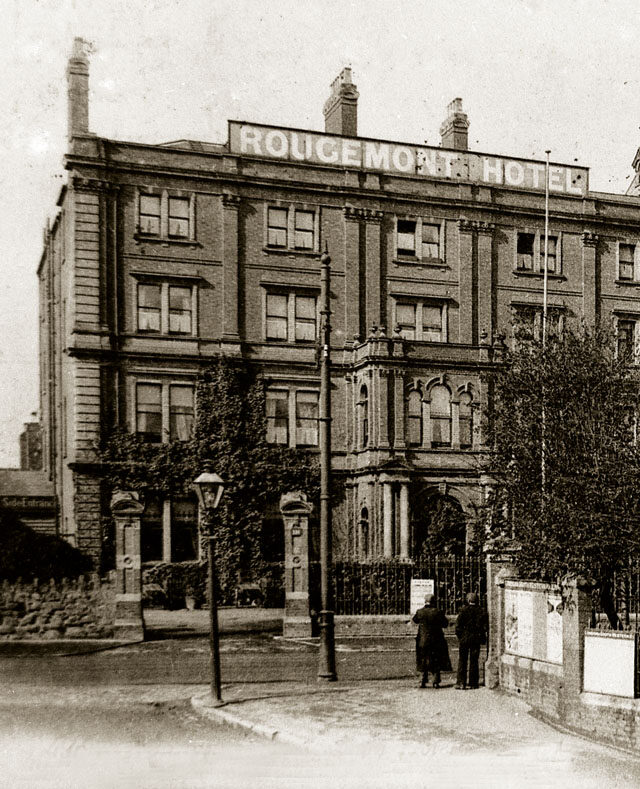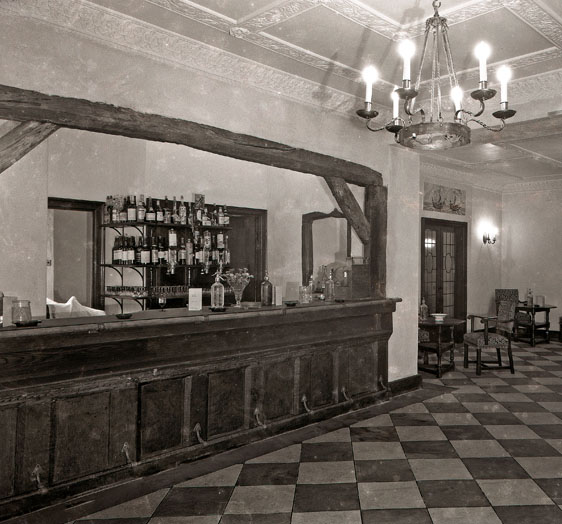Community researcher, Abigail Robinson
Prior to the Rougemont Hotel’s construction, its location was home to Exeter Borough Prison. The prison had been built in 1818 and operated for 45 years. It had replaced a prison in South Gate. When the prison closed in September 1863 the prisoners were moved to the nearby Devon County Gaol, now known as HM Prison Exeter.
In April 1877 the foundation stone for a new hotel was laid; The Devon and Exeter Hotel Company constructed a one-hundred-bedroom hotel built of brick and white Beer and Bath stone. Despite a near death experience for construction worker John Howard, who fell from the hotel’s scaffolding in May 1878, the construction continued smoothly until 1879 when progress began to slow. However, in 1879 the mayor visited the hotel accompanied by other magistrates and granted a license.
On its completion the Rougemont Hotel cost £21,000 with an extra £6,000 for furnishings and £5,000 for fittings. Its opening was held in May 1879 and was celebrated with a grand dinner. The architect was Charles Edwin Ware. The bell apparatus and gas-fittings were provided by Mr E. Whipple and the lifts were from Waygood and Co. of Leeds. Garton and King fitted the kitchen, the laundry, drying rooms and the basement.
The hotel was intended to be a much larger hotel with a second wing and a circular tower. The owners planned a park with a fountain on the land opposite but on this site was later built Central Station.

On 10th January 1888, the first ball was held in the ball-room for 420 county families. An Annual Christmas Ball would become a tradition and was held every year until the First World War.
Between 1914 and 1918 the hotel held fundraising events and functions for those affected by the war. Dance classes were led by Madame Adele Vilas Hoare for boosting morale. When in 1919 the neighbouring Victoria Hall went up in flames, the hotel had a lucky escape. The dancing hall caught fire, the hotel was evacuated and suffered damage but only to the side that faced the blaze. In 1940 the Drake and the Golden Hind bar was opened. This marked Exeter’s association with naval history, specifically referencing Sir Francis Drake. A stained-glass window was added to the central staircase. It depicts a scene from Shakespeare’s Richard III, where the king visits Exeter and is shown Rougemont Castle.
The hotel escaped serious damage during the Second World War. The hotel was not hit during the Blitz of 1942 but the only known photograph taken that night of Exeter was shot from the hotel’s top floor. In it the cathedral can be seen against the pitch-black night, smoke and flames engulfing Exeter.
